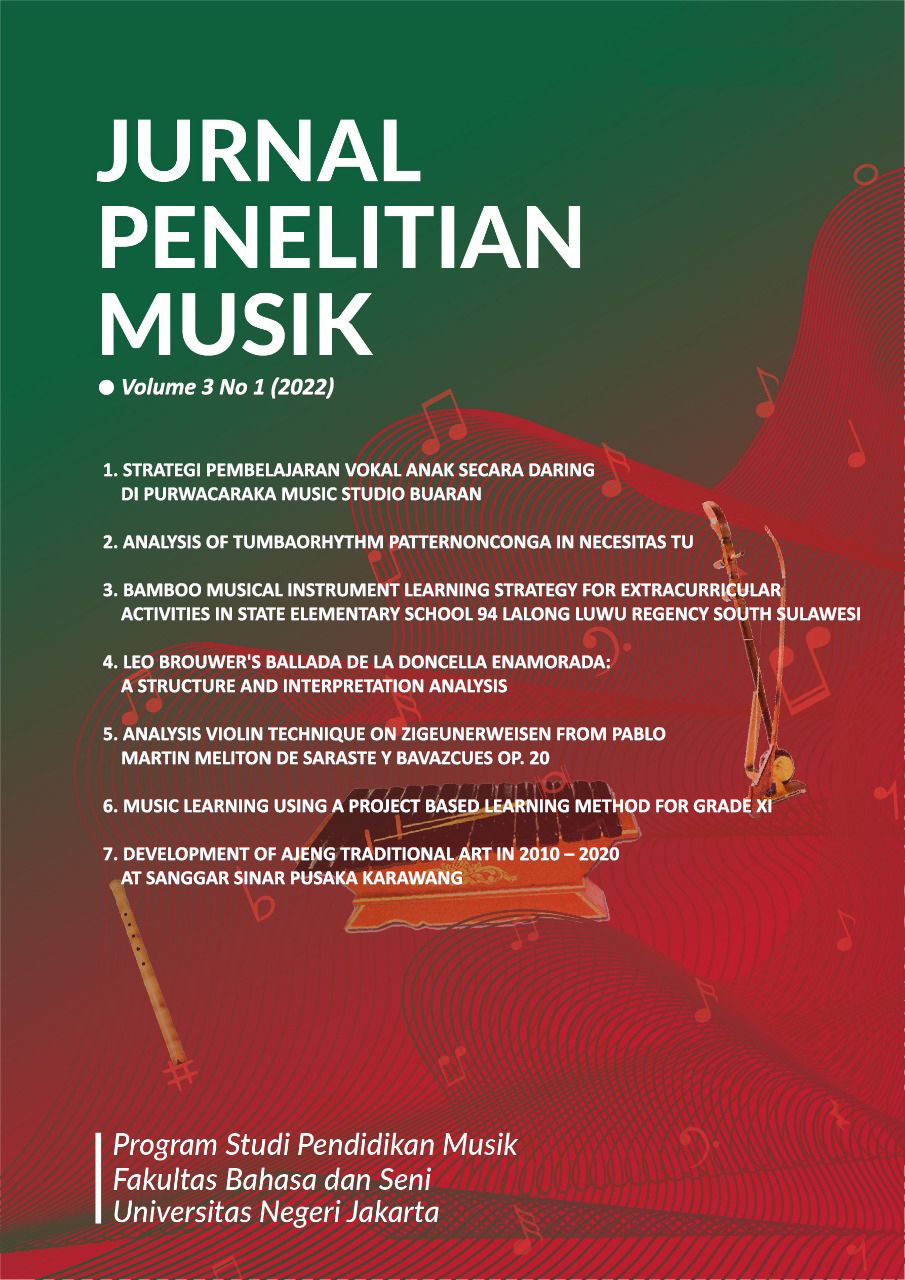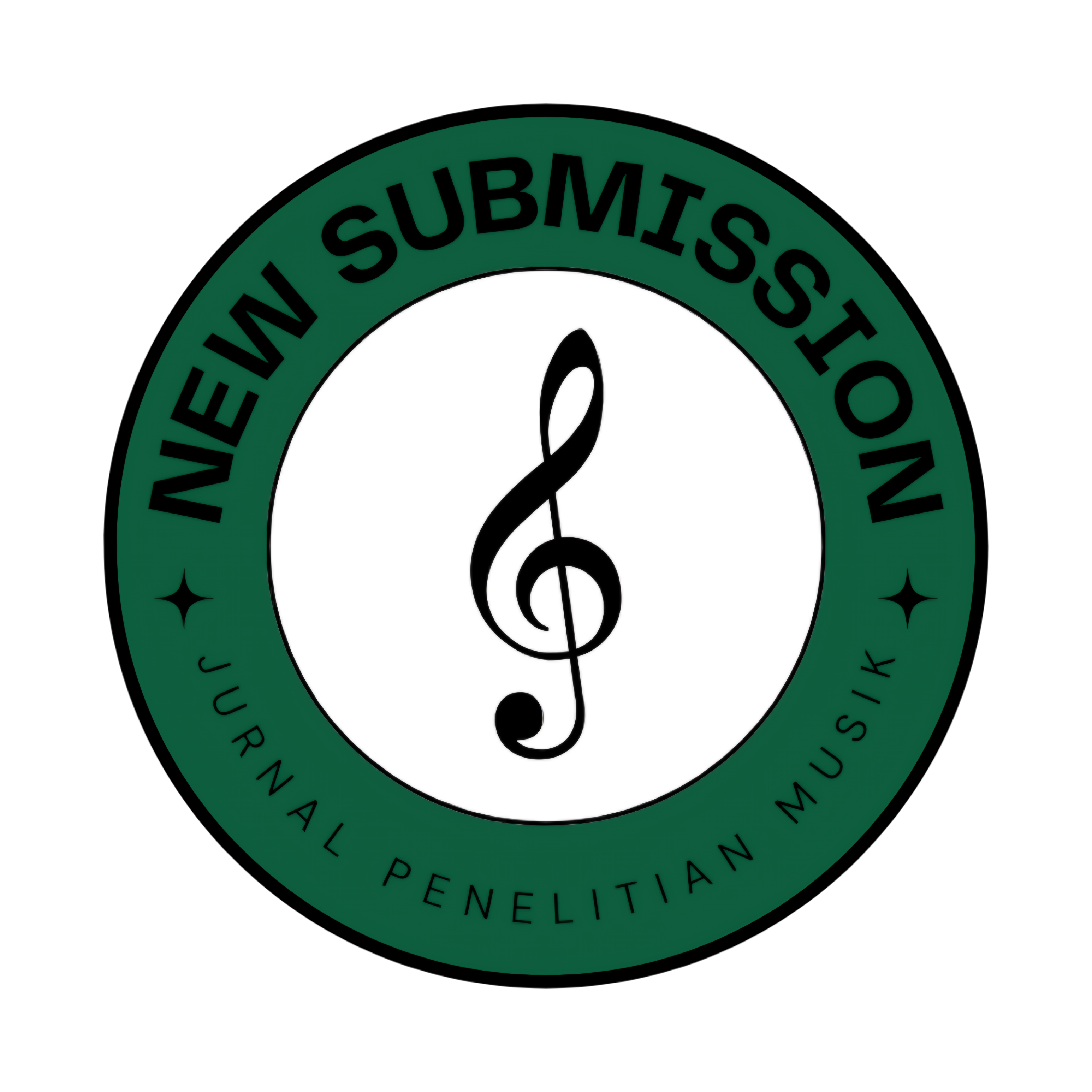LEO BROUWER'S BALLADA DE LA DONCELLA ENAMORADA: A STRUCTURE AND INTERPRETATION ANALYSIS
DOI:
https://doi.org/10.21009/JurnalPenelitianMusik.31.04Keywords:
Structure, Interpretation, Ballada De La Doncella EnamoradaAbstract
Ballada De La Doncella Enamorada is the third move of Leo Brouwer's El Decameron Negro suite. The researcher wants to discuss the structure and interpretation of this work because when the researcher plays it, there was no continuity between the first and second movements. Researcher used qualitative methods with content analysis techniques and musicological approaches. Data obtained by documentation study, interviews, and literature study. Data analysis techniques used are data reduction, data presentation, and data inference. The results of this research indicate that this work is in the form of Rondo with the structure of A (a-a') - B (b-b'-y) - A (a) - C (c-c') - A (a). This work also does not have a programmatic continuity with other movements, as well as in a modern suite. But this movement is still written based on one main story theme like the other movements. This movement contains two very contrasting emotions. Part A has a more lyrical-like ballad characteristic, while the B and C parts are more tense and lively. Brouwer describes the feeling of a princess performing a ritual dance as a punishment, but at the same time falling in love with a warrior. This research can be a reference for other scientific research that discuss the structure and interpretation of 20th century musical works. In addition, this research can be useful for guitar major students of Music Education study program, State University of Jakarta.
Downloads
Published
Issue
Section
License
Copyright (c) 2022 Averil Yazid

This work is licensed under a Creative Commons Attribution 4.0 International License.







